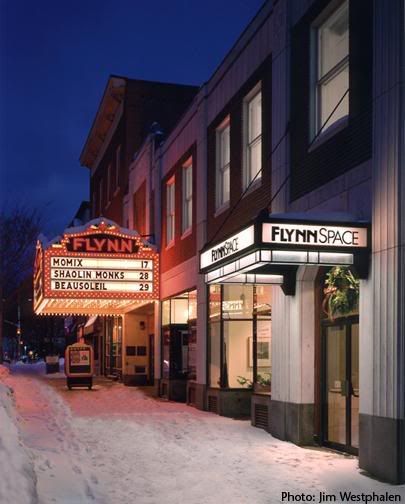Friday, October 16 - "I started last week with three technically strong dancers: Mike, an ex-Jazzercise instructor; Andrea, a UVM dance student; and Julie, a yoga teacher and dancer in Burlington. They brought me a great sense of relief and excitement. I sensed that they were as hungry for the work as I was, which, as a choreographer, is a very privileged feeling."
"Andrea, Mike, and I started with a directional focus: a diagonal pass, which is a proven strong line of direction on a stage. We used fists to confirm a straight wrist aesthetic, and each developed unimportant counts of eight—unimportant because I want to focus on timing and overlapping, rather than cool movement. We need to even out the awkward space between Andrea’s height and Mike’s. I would like them to weave in and out of each other more fluidly. Of course it was the first day, but they are opposite sizes, so it could be a challenge."
"Mike, Julie, and I created a short standing phrase focusing on rhythm and dropping movements into the next. Mike is much more staccato and firm; Julie, smooth and circular. An interesting contrast, but it needs attention. We ended with a floor phrase, increasing our heart rates and shifting horizontally through space. We also did a lot of splicing movement phrases together, which we need to do more of—small pieces, repetition, breaks in between watchable dancing."
"I work by making small pieces and putting them together. Usually, what happens in the moment stays unless our gut instinct immediately throws an idea out. I have warned my group that we will create based on what happens when it happens, and whose body remembers what. The speed at which we worked was phenomenal; I was able to give movement assignments, and piece each person’s version together within minutes. All three dancers seemed comfortable with starting right in. I’m glad not to waste time."
"I am also intrigued by the idea of twin dancing: similar looking people, not relatives."
"Characteristics, attributes, style, stamina, and stance. And I am slightly obsessed with back-up dancer movement (think of a glorified step-touch). I’m hoping these ideas will be how I bring in the other chosen dancers. I envision creating a medley of music and dances, the challenge being what thread can tie it all together."
"I also need to find a proficient music editor/maker/DJ?"
"I have to keep reminding myself to stay put. Don’t focus so hard that I can’t see straight, but just STAY PUT."
Next open rehearsal is Friday, October 23 from 11am to 2 pm in Chase Studio at the Flynn Center. Please come!


